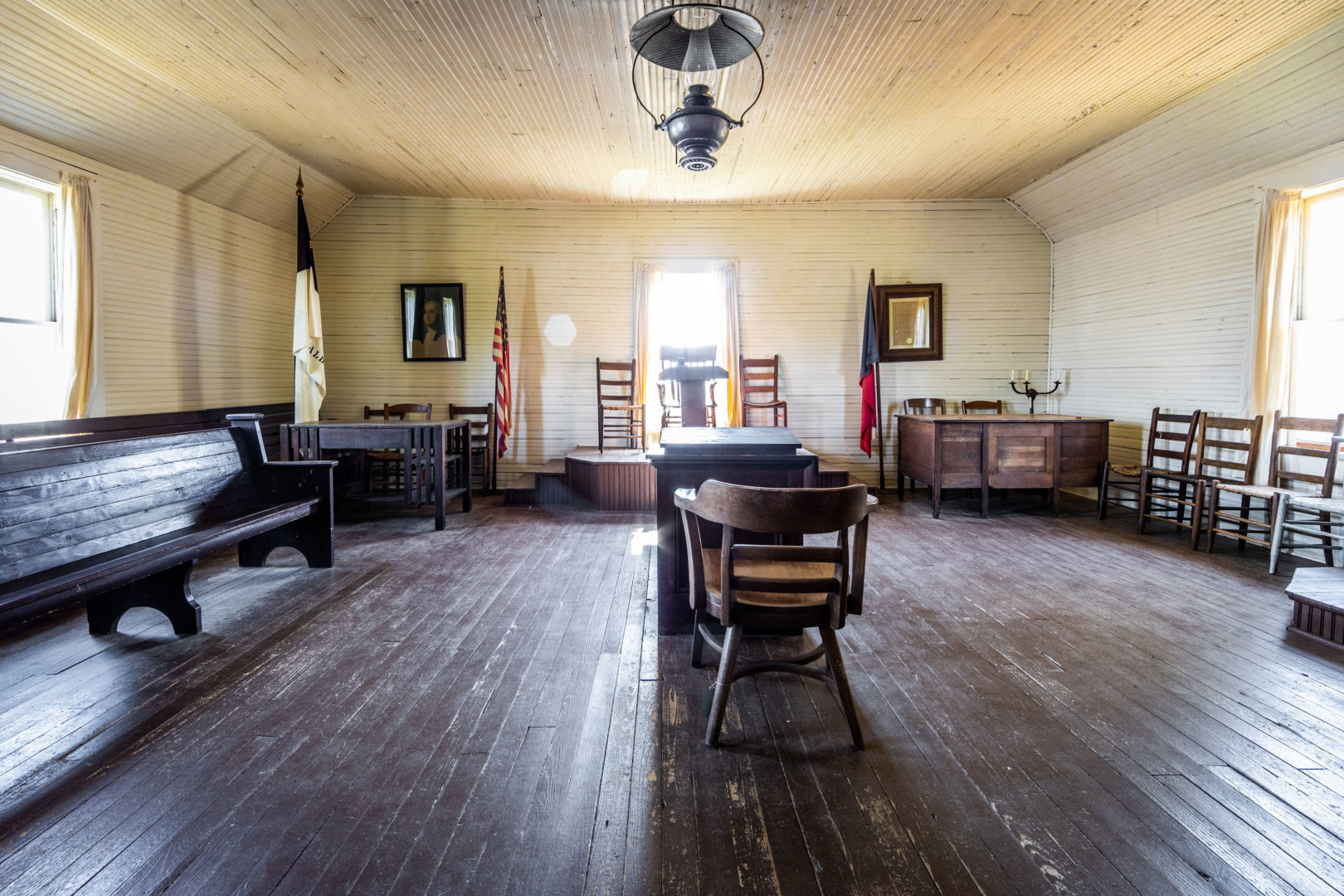The Wiregrass area of Georgia was an ideal place for growing cotton, which requires a minimum temperature of 60 degrees F and at least 180 frost-free days. Cotton grew well in the Wiregrass region’s long, hot summers with their high humidity and unobstructed sunshine (once the pine trees were cleared away). With the invention of the cotton gin in 1793 by Eli Whitney, cotton growing took off in the south. The cotton gin here at the GMA works on the same principle as Eli Whitney’s cotton gin, with several steps involved in processing the cotton.
First, the cotton is taken from the wagon of the farmer through a duct and elevator system that is just like a large vacuum cleaner. The cotton then goes into the gin itself, from the feeder, and the seeds are taken out of the cotton by the gin. The Museum’s gin is an 1896 Lummus gin with 80 saws to gin the cotton. The seeds fall out of the bottom of the gin and the cotton moves the condenser, where dirt and trash are removed. Next, the cotton goes into the cotton press to be pressed into a bale, which will weigh about 500 pounds.
The cotton press here at the GMA is a Lummus double box turntable, friction disc drive, screw type press. The press puts about 40-60 pounds of pressure on the cotton to press it into a bale. The whole cotton gin is powered by a Frick 110 horsepower steam engine.
Guest Experiences May Include
Cotton gin operation and production; Steam power and its effect on labor and industry; Automation of labor

















